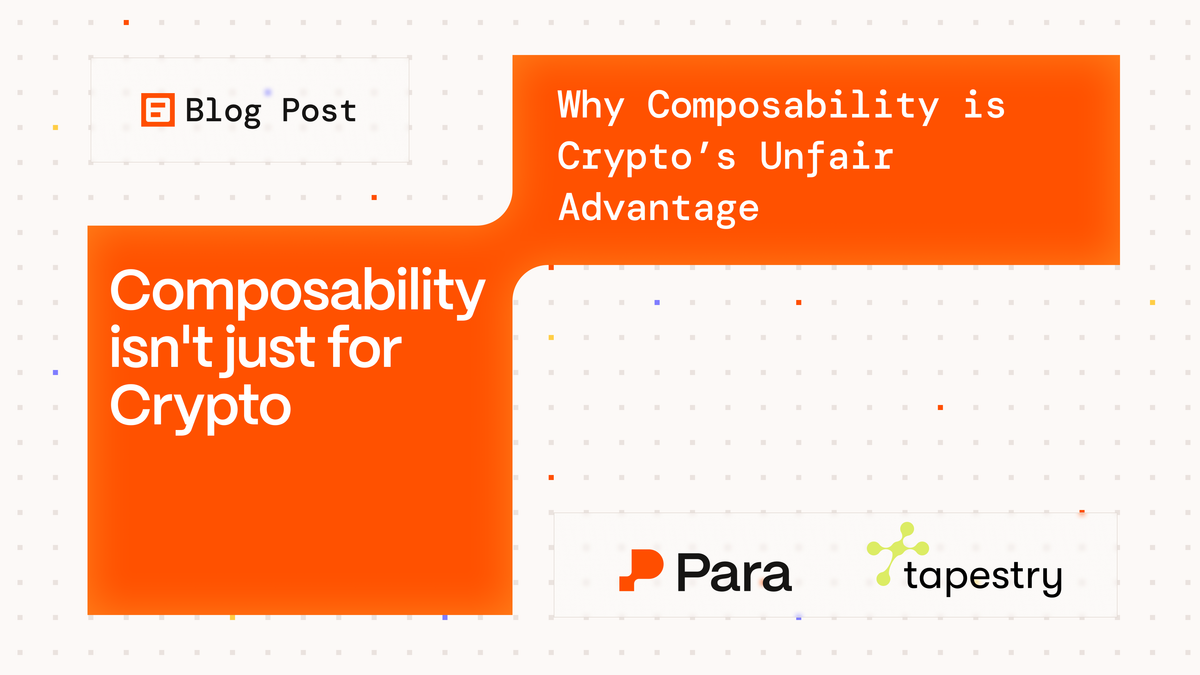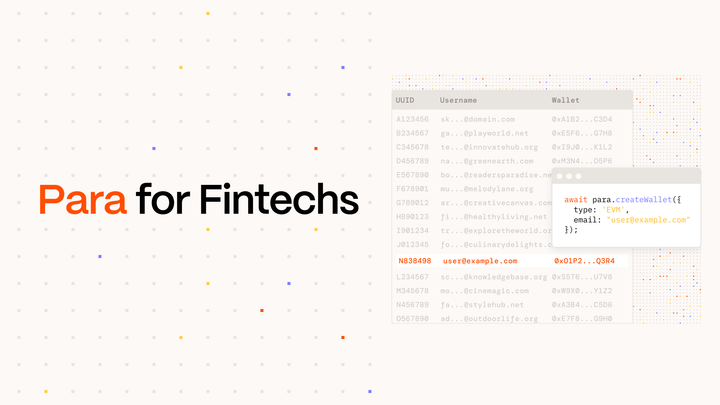Composability isn't Just for Crypto
Why composability is crypto's unfair advantage. Building for maximum composability with Para's Universal Ecosystem Wallets and Tapestry's Unified Social Graph.

When we talk about composability in crypto, we frame it as a novel idea. But the truth is, composability is how the internet has always worked.
And to understand what's at stake as crypto grows, it's helpful to look back at one of web2's most successful case studies: email.
The Layers of Composability in Web2
Consider the stack behind your inbox:
- Protocol Layer: Email standards like SMTP and IMAP
- SDK Layer: OAuth and "Sign in with Google"
- App Layer: Gmail, Superhuman, Outlook
This is classic composability in action. Gmail builds on open email protocols, instantly benefiting from global network effects.
Superhuman builds on Gmail, creating a better experience by plugging into Gmail APIs. Gmail, in turn, retains user control and network value through Google's sign-in layer. Each layer builds on what came before—and adds something new.
Why Composability Is Crypto's Unfair Advantage
Composability lets web2 ecosystems scale efficiently. Apps don't reinvent the wheel. Instead they plug into shared infrastructure, layer on differentiated experiences, and grow the pie for everyone involved.
But crypto can do this better. While web2 has open protocols at the base layer (SMTP and IMAP are permissionless standards), composability gets constrained by corporate gatekeepers at higher layers. Gmail can shut off Superhuman's access tomorrow. Google can change OAuth terms unilaterally. The protocols are open, but the control points above them aren't.
Crypto's advantage is enabling all three of these layers while remaining permissionless and permanent. Not just the base blockchain protocol, but also identity, wallets, and application layers. No single entity can unilaterally break integrations or change the rules. Protocols compound globally without corporate bottlenecks.
The Composability Stack in Crypto
Just like email, crypto has natural layers of composability:
- Protocol Layer: Blockchains, standards (ERC-20, SPL tokens), cross-chain bridges
- Infrastructure Layer: Wallets, identity systems, shared state (social graphs, reputation)
- Application Layer: DeFi, gaming, social, commerce apps
Key insight: The most successful crypto apps will be those that maximize composability at each layer while capturing value through unique user experiences.
Where Composability Breaks Down
Several trends threaten crypto's composability advantage:
App-Specific Embedded Wallets: Embedded wallets offer huge UX improvements but create new silos. Each embedded wallet locks identity and liquidity into isolated experiences, breaking the permissionless composability that makes crypto unique.
Ecosystem Fragmentation: L2s and alternative L1s create composability islands. Users and liquidity get stranded across incompatible chains, reducing network effects.
Proprietary Standards: Apps building closed systems instead of open protocols limit future composability and ecosystem growth.
The Composability Imperative
Net new insight #1: Composability isn't just a technical feature—it's crypto's core business model. Web2 companies capture value by creating moats and lock-in. Crypto protocols capture value by enabling maximum composability and network effects.
Net new insight #2: The crypto industry often frames wallet design as a choice between "embedded wallets" (built into apps for better UX) versus "external wallets" (standalone wallets that users control). But this debate misses the point. The future isn't choosing between UX and composability—it's building systems that deliver both. Universal wallet standards, cross-chain identity, and permissionless integrations can preserve user experience while maintaining crypto's composable advantage.
Building for Maximum Composability
Para's Universal Ecosystem Wallets
Para demonstrates composability at the infrastructure layer by creating wallets that work seamlessly across multiple apps both within and beyond an ecosystem while maintaining user portability. Users can move between different applications without re-onboarding, and liquidity flows freely across the ecosystem. The wallet becomes shared infrastructure that multiple apps can build on, rather than each app creating its own isolated wallet experience and building a user base from scratch.
Tapestry's Unified Social Graph
Tapestry shows composability at the data layer by building a unified social graph that combines onchain activity with web2 social data. Instead of each social app building isolated user profiles, Tapestry creates a composable identity layer that any application can plug into. This shared social infrastructure lets apps focus on unique experiences while benefiting from rich, portable user identities.
The Path Forward
The goal isn't to prevent innovation in UX or app design. It's to ensure that as crypto grows, we preserve what makes it uniquely powerful: permissionless composability that enables global coordination without corporate gatekeepers.
Composability is crypto's competitive moat against web2. If we optimize it away for short-term UX gains, we lose what makes crypto worth building in the first place.
Composability Is the Point
We don't need crypto to be different just for the sake of it. We need it to be better, more open, more portable, more composable. Composability is how ecosystems grow, how protocols stay relevant, and how users win. If we get this right, crypto stops building in silos—and starts building something truly global.



